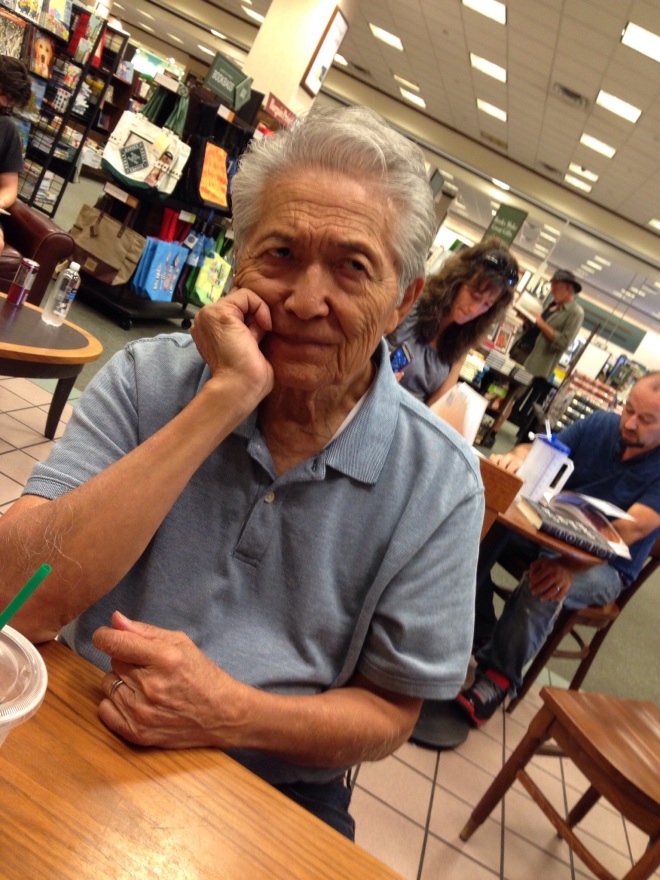Mas Nonaka was 8 years old when his family boarded the train from the assembly center at the Santa Anita Racetrack in California to head for their new “home”, an internment camp in Colorado.
He does not have any photographs of himself from this time of his life, but he does remember his Mom cutting his hair so the bangs would hang straight across his forehead.
Once again each family member packed up their meager possessions, only what they could carry. Somehow his Dad figured out how to break up his Mom’s sewing machine, it traveled with her to Santa Anita and then to Amache. Mas has no clue how this miracle happened but it must have been a prized possession for the family.
He does not remember much about the trip as he was just a child. The adults adopted a “show no fear, show no weakness, show no vulnerability” attitude to protect their children and to protect their dignity. As a result Mas does not remember being afraid, just another adventure to an 8 year old boy.
He cannot remember how long the train ride was, only that it was a long ride, at least 2 days long. Every car on the train had an armed guard at each end. The blinds were pulled down and the guards would not allow their prisoners to look out or lift the blinds “for their own protection”.
The Nonaka family had left one barren windy place to travel to another barren and windy place.
Arriving at Camp Amache, the internment camp near Granada, Colorado in September 1942 they did not know this would be their home for the next 3 years.
There were 349 barracks. Each barracks held four rooms, 2 smaller ones on each end for the smaller families and two larger rooms 20’X20′ or 20’X24′ in the middle, one room for each family. Each internee was given an Army bed or cot, one blanket and one straw mattress. Each room had a pot bellied coal stove for heat and one light bulb. The walls and floors had cracks where the wind and dust would whistle through the barracks.
There were no toilets at the beginning. They used an outhouse. Toilets were never installed in the individual barracks. Most families had a bowl called chamba to use as their indoor toilet. This was for the elderly and the children and just anybody who didn’t want to make a trip to the outhouse in the dark or bad weather.
Mas had never seen snow before but learned that snow made the barracks miserably cold in the winter. It was also miserably hot in the summer.
The rooms were not really rooms until the fathers got together and hung sheets from wires to act as walls in an attempt to obtain some privacy.
The whole camp was surrounded by barbed wire and watch towers or sentry towers with spot lights and guards with machine guns.
Life at Amache Camp had started.
To be continued.



Wow!!! i have to go back to part 1!